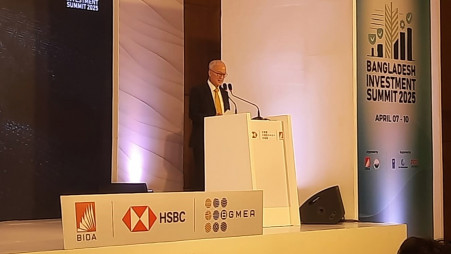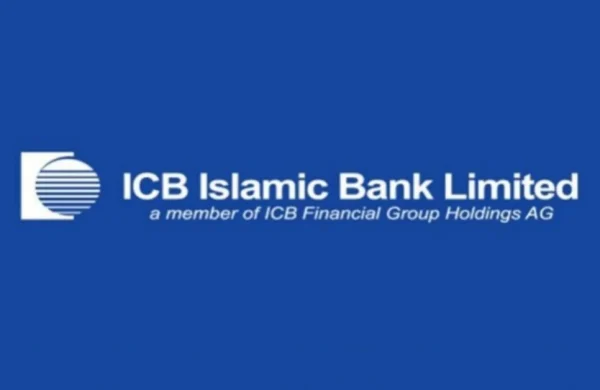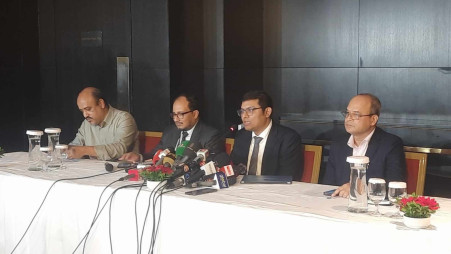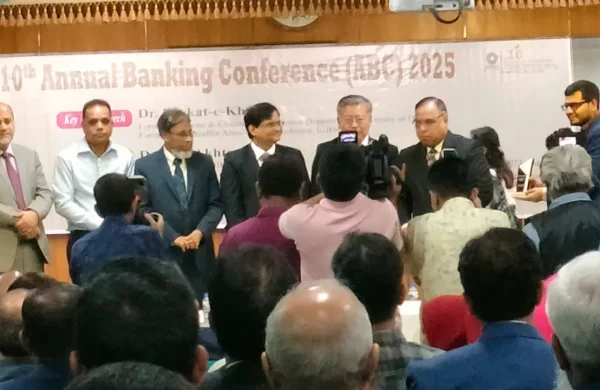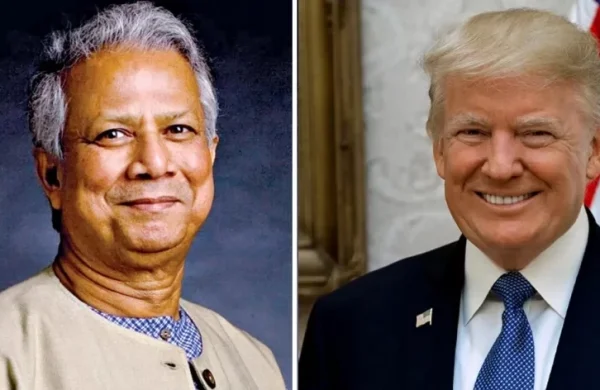Salman leveraged power to push Tk1000cr Amar bond sales
- Update Time : Saturday, August 17, 2024
- 80 Time View

TDS Desk:
As institutional investors hesitated to support debt instruments tied to Salman F Rahman, an influential businessman and adviser to Bangladesh’s ousted prime minister Sheikh Hasina, few anticipated the extent he would go to secure Tk1,000 crore financing for his new real estate venture — Sreepur Township Limited (STL) — months before the last national election.
Salman, vice-chairman of Beximco Group and later a lawmaker, was arrested on 13 August, triggering extensive debate over his use of public office for personal gains.
Infamous for accumulating vast bank loans, defaulting and stock market manipulation, his reputation for questionable practices was also evident in this bond sale.
Experts and investment bankers said Salman used his political power to sway regulators, companies, and investors, allowing him to secure the bond sale despite his chequered history of financial mismanagement.
At the heart of this game is the IFIC Bank, where Salman and his family owned less than 5% of the shares, yet he wielded significant influence over the bank.
How banks were forced to buy Tk3,000cr Beximco Sukuk bond
As of 31 July, the government held 32.75% of the bank’s shares, while the remaining stake is owned by the general public and other investors including Salman.
As an adviser to the prime minister, Salman had close ties with the government high-ups and arranged for the bank to guarantee Tk1,000 crore (Tk1,600 crore with interest and principal) in bond liabilities for STL, a company led by Salman, for a minimal fee of Tk10.5 crore.
In October last year, the bonds were marketed in a way that made it appear as though they were issued by the bank itself, rather than Salman’s STL, to attract investors.
Experts argued that this deal risked the bank’s financial stability to benefit Rahman’s interests.
“Bond guarantees can be a legitimate business for banks, provided the borrower’s creditworthiness justifies the risk and the fee reflects the risk-reward ratio,” said Mahmood Osman Imam, an economics professor at the University of Dhaka.
However, Imam pointed out that STL, a newly formed entity with Rahman at the helm, did not merit such a significant bond guarantee, highlighting the evident conflict of interest.
The company’s profile under Rahman’s leadership raises further concerns.
Debentures issued by Salman’s firms in the 1990s defaulted until 2021, yet Rahman continued to pursue larger borrowings, including a Tk3,000 crore Sukuk (popularly known as the Islamic version of bonds) issue.
Institutional investors, wary of Rahman’s history, were reluctant to subscribe, leading him to influence the central bank to mandate subscriptions by financial institutions.
Verbally forcing banks and some other big investors to subscribe to the Sukuk was the talk of the town. No one spoke about it publicly out of fear then.
For the STL bond, Rahman bypassed institutional scrutiny, opting instead to target unsophisticated savers through a marketing campaign that misleadingly branded the bond as “IFIC Amar bond.”
This campaign, distributed through bank branches, drew in over 7,000 individual investors with promises of a 12% annual return, only for the true nature of the bond’s risks to emerge later.
With Salman currently in custody, his spokespersons at STL and IFIC Bank have sought to reassure bondholders, with the latter’s Company Secretary Md Mokammel Hoque, saying that the guarantee decision was made by top management and approved by the board of IFIC.
Mokammel Hoque declined to discuss Salman F Rahman’s influence on the matter, directing inquiries to the then managing director (MD) of IFIC Bank.
The then MD Shah Alam Sarwar was not reachable for comment. Syed Mansur Mustafa, the current MD of IFIC Bank, did not respond to requests for comment either.
After the fall of the Sheikh Hasina government on 5 August, Salman F Rahman’s son Ahmed Shayan Fazlur Rahman lost the directorship at IFIC Bank due to loan default. Also, employees of the bank demanded an overhaul of the board.
Kaisar Ahmed, company secretary of STL, told that, “Bondholders should not worry at all, we are still regularly repaying and as the guarantor, IFIC Bank, will cover repayments in case of our failure.”
Notably, over 99% of the bond was sold to individual investors.
According to the information memorandum of the bond, STL had a total asset of Tk335 crore.
Experts, including the former chief of the securities regulator Faruq Ahmed Siddiqi, also kept questioning the role of The Bangladesh Securities and Exchange Commission (BSEC) in approving the risky bond that did not match the issuer company’s (STL) creditworthiness.
“I have been surprised that the BSEC approved the gigantic bond significantly surpassing the issuer company’s assets. It had no business track record at all,” Faruq Ahmed Siddiqui told that.
However, it was widely known that the heads of the regulators relied heavily on Salman for their appointments and job security.
Salman F Rahman’s company, Beximco Pharmaceuticals, was the sole player in the industry permitted to import Covid-19 vaccines, profiting over Tk100 crore from the exclusive trade arrangement.
WHAT IS IFIC AMAR BOND
Amar bond is a zero-coupon bond. Unlike coupon-bearing bonds where investors buy a bond at face value, keep enjoying periodical interests and get the principal back after maturity, investors do not get any interest from a zero-coupon bond.
They instead buy it at a discounted price and get the principal at face value back after maturity.
For the first time in the country, Amar bond offered monthly redemption of one of every 60 units.
For instance, investors had to buy 60 or multiple units so that from the very first month, they could start redeeming one of the 60 units sold at the lowest discount.
Thus, redeeming one unit every month, the last unit is set to be redeemed at the end of the 60th month and the average annual return was announced to be 12%.
At the time of issuance, an IFIC bank top-tier official told that it was important to let people see and believe that money lent to a bond issuer like STL would be returned and that was why they planned for monthly redemption, instead of a long tenure for redemption of all units.
The units set to be redeemed after five years were issued at around a 45% discount, while the units set to be redeemed after the first month were issued at a 1% discount.


